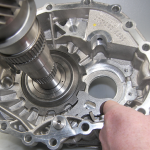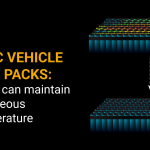Advantages of using passive thermal management in conjunction with active cooling
In the previous blogs, I have spoken about how LHS F&F passive thermal management solution is one of the most cost effective and suitable standalone solutions for the electric 2-wheelers and 3-wheelers, where active cooling is not viable due to space and cost constraints. (To read the previous blogs, please click on the links at the end of this blog.)
Whereas, in large battery packs, used in electric 4-wheelers and buses, due to the high cost of the batteries, OEMs have to offer a higher cycle life so that the battery pack lasts for at least 6-10 years. To do so, it is imperative for OEMs to maintain the batteries in the temperature range of 25-35 deg C.
The large number of cells stacked in series and parallel combined with the advancement of battery technology that has led to development of higher energy density cells, leads to an excessive rise of the pack temperature during charge and discharge. High ambient temperatures further expedite the temperature rise, especially in countries like India. Therefore, an effective thermal management system is of paramount importance.
To maintain the batteries at a temperature between 25-35 deg C even when the ambient temperature exceeds this range, an active cooling system is required in 4 wheelers and Buses. The active cooling system can either be air cooled or liquid cooled. Though there is no space constraint in larger applications to accommodate the active cooling, when used as a standalone it puts a load on the battery, thus discharging it much faster. The active cooling kicks in frequently by drawing current from the battery whenever the temperature of the pack exceeds the set temperature.
The solution: Hybrid Thermal Management
Using passive thermal management which is much more energy efficient, in conjunction with active cooling, also referred to as Hybrid Thermal Management, the number of times the active cooling has to kick in dramatically reduces, thus keeping the battery charged for a longer time and providing more range to the driver. What this also means is that for the same performance and specifications, the OEM could design a smaller battery pack or smaller active cooling system thus reducing the size of the refrigeration unit, the pumping unit and bringing down the weight and the cost.
The concept is very similar to the use of LHS material in the thermal management of a building as seen in the case study below.
The graph below shows the comparison between the runtime of a cooling fan to cool a room during the summers.
As it can be seen from the graph, there is a substantial reduction in the number of times the cooling fan kicks in with and without LHS material.
To use LHS material in conjunction with active cooling or any other queries, do get in touch with me at ashutosh@quanzen.com. I would love to know your thoughts and insights in the comments section below.





